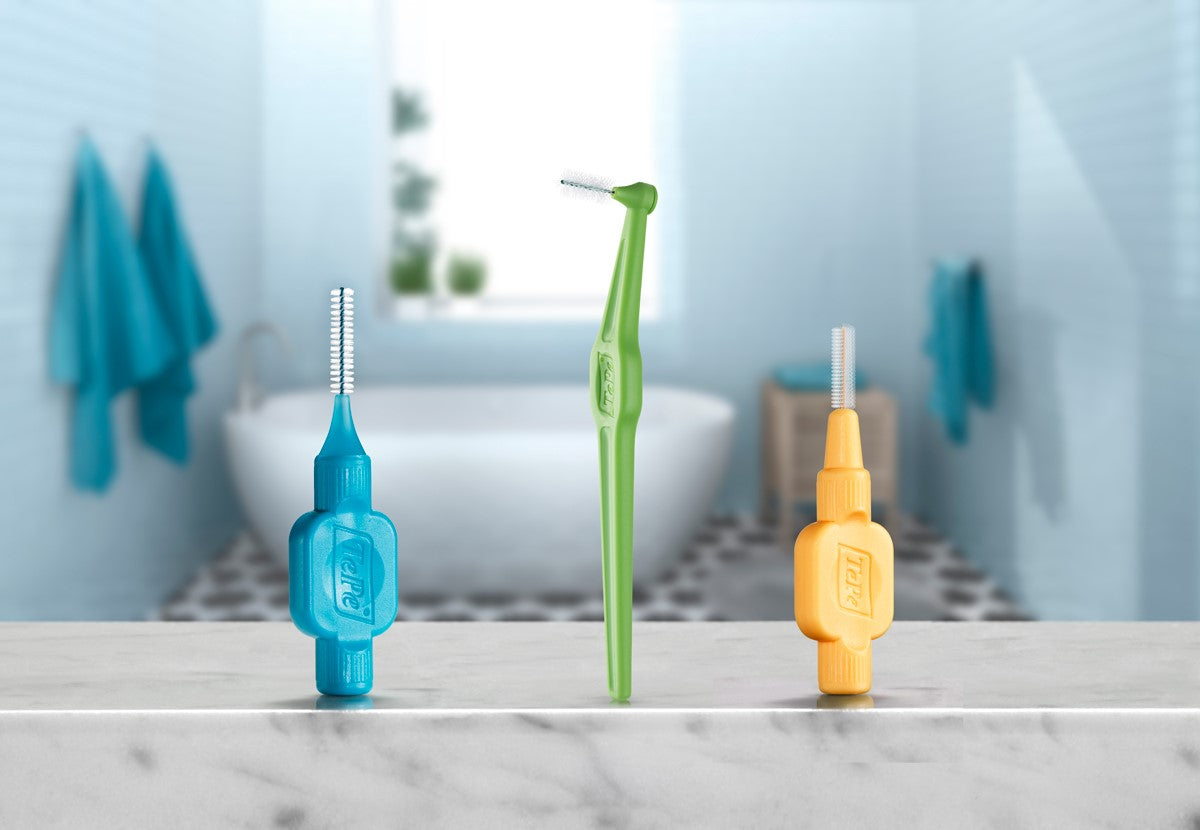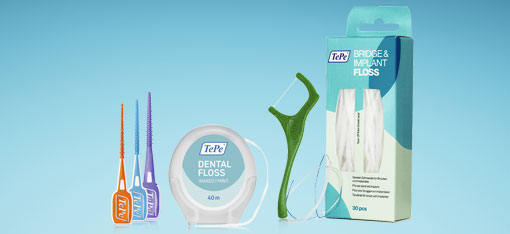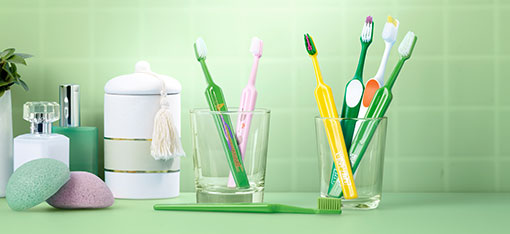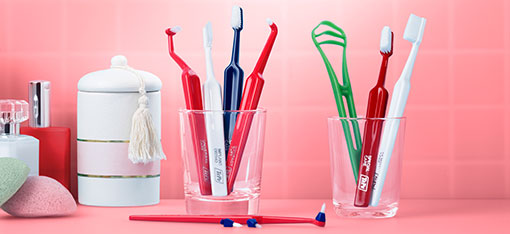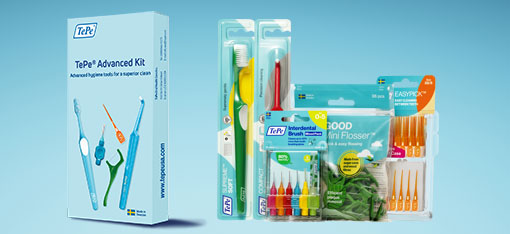TePe features nine color-coded interdental brushes ranging from pink to black, but how do you know which size(s) are best for you? It’s great if your dental professional can guide you to the perfect-for-you-sizes and also give you their best tips on practical interdental cleaning, but for those of you trying on your own, here’s a video guide and a image size guide below for all our interdental brushes.
How do I know which interdental brush size is right for me?
When choosing your correct size there are many considerations. Please know the best sizing recommendation is from your dental professional. Each space between your teeth may be different, so you might need multiple sizes. The bristles should fit snugly between the teeth and the wire should not touch either adjacent tooth. Do not force a brush into a space, and there should be no signs of pain, otherwise size down to a smaller size.
Interdental Brush Size Guide
TePe Interdental Brush - Original
Our best-selling brush for removing plaque between the teeth, straight brush head and short handle - available in 9 sizes.
TePe Interdental Brush – Angle
Angled brush head for easier access to hard to reach areas of the mouth, long flat handle with a stable grip - available in 6 sizes.
TePe Interdental Brush - Extra Soft
Extra soft bristles for the most gentle clean, for patients with sensitive teeth, dry mouth or after oral surgery – available in 6 sizes.
Mixpack - Makes it easier to find your size(s)
The mixed pack of Interdental Brushes – Original, Angle and Extra Soft can help you discover which brush(es) work best for you. When you have bought our Interdental Brush mixpack follow below guide on how to test the correct size.
Interdental Brush Size Guide
1. Start with the smallest size
Look in the mirror and insert the brush between your teeth, close to the gums. Start with the smallest size and work your way up until you feel the brush bristles engage the tooth surface and the gum tissue. The brush should have a snug fit but the wire, although plastic coated, shouldn’t touch the sides of the teeth or the gums. Never force the brush into a space.
2. Brush to its full length
Once inserted, move the interdental brush to its full length back and forth about 2-3 times. Make sure to clean all your spaces once a day.
3. Different gaps need different sizes
You are likely to need two-three different sizes, or the combination of one-two brushes and floss – it all depends on your spaces which normally vary throughout your mouth.
4. Your gums can feel sore and bleed
If you haven’t cleaned between your teeth in a while, your gums can feel sore and bleed when you start cleaning. Don’t stop – bleeding is a sign of inflammation caused by plaque, so it’s important to keep cleaning every day.
Our Products
Our best-selling brush for removing plaque between the teeth, straight brush head and short handle - available in 9 sizes.
Angled brush head for easier access to hard to reach areas of the mouth, long flat handle with a stable grip - available in 6 sizes.
Extra soft bristles for the most gentle clean, for patients with sensitive teeth, dry mouth or after oral surgery – available in 6 sizes.


